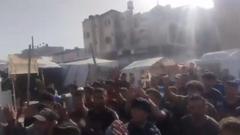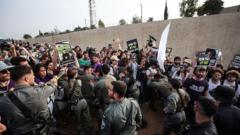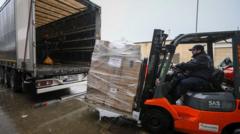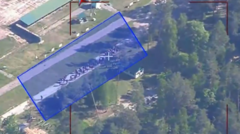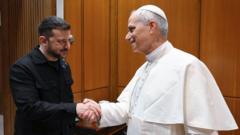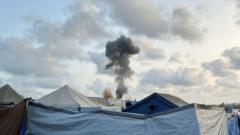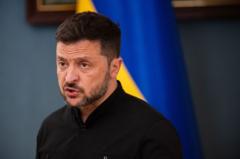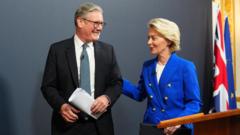Putin's visit to the Kursk region emphasizes strained relations and significant challenges faced by civilians displaced by the ongoing conflict.
Putin's First Visit to Kursk Highlights Ongoing War Tensions

Putin's First Visit to Kursk Highlights Ongoing War Tensions
Russian President returns to Kursk as Ukraine's military presence dwindles, amid a renewed push for peace talks.
In a pivotal moment amid the ongoing conflict, President Vladimir V. Putin visited the Kursk region for the first time since Russian troops succeeded in driving Ukrainian forces out of previously occupied territories. The visit was marked by an inspection of a nuclear power plant and a meeting with local volunteers, with the Kremlin using the occasion to project an image of regained stability despite the lingering fighting in the area.
The backdrop to this visit is the tumultuous military history in the Kursk region, which saw a swift Ukrainian incursion last August, claiming around 500 square miles of Russian territory. The situation, however, shifted as Russian reinforcements, bolstered by North Korean troops, pushed back and launched significant counteroffensives, reclaiming much of the territory by March.
Putin’s engagement with the Kursk populace coincides with recent peace talks between Russian and Ukrainian officials, marking the first direct discussions in over three years. For Putin, consolidating control in Kursk has ramifications for negotiation dynamics—his previous statements suggest that he would not entertain peace talks while Ukrainian forces held any ground in the region.
Tragically, the violent confrontations have resulted in heavy casualties. While the Russian government reports nearly 300 civilian deaths and around 110,000 displaced residents in Kursk, the true scale of these losses remains unclear due to restricted access for independent media and research groups.
Displaced civilians have voiced grievances over inadequate government aid and a broader societal indifference to their plight. In response, Putin announced a plan to provide $800 monthly stipends to residents in border areas during his visit, seemingly aimed at mitigating rising discontent.
As Putin strives to navigate the complexities brought on by the war, the focus on Kursk underscores the multilayered challenges—military, humanitarian, and diplomatic—that continue to shape the conflict today.
The backdrop to this visit is the tumultuous military history in the Kursk region, which saw a swift Ukrainian incursion last August, claiming around 500 square miles of Russian territory. The situation, however, shifted as Russian reinforcements, bolstered by North Korean troops, pushed back and launched significant counteroffensives, reclaiming much of the territory by March.
Putin’s engagement with the Kursk populace coincides with recent peace talks between Russian and Ukrainian officials, marking the first direct discussions in over three years. For Putin, consolidating control in Kursk has ramifications for negotiation dynamics—his previous statements suggest that he would not entertain peace talks while Ukrainian forces held any ground in the region.
Tragically, the violent confrontations have resulted in heavy casualties. While the Russian government reports nearly 300 civilian deaths and around 110,000 displaced residents in Kursk, the true scale of these losses remains unclear due to restricted access for independent media and research groups.
Displaced civilians have voiced grievances over inadequate government aid and a broader societal indifference to their plight. In response, Putin announced a plan to provide $800 monthly stipends to residents in border areas during his visit, seemingly aimed at mitigating rising discontent.
As Putin strives to navigate the complexities brought on by the war, the focus on Kursk underscores the multilayered challenges—military, humanitarian, and diplomatic—that continue to shape the conflict today.

